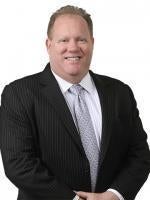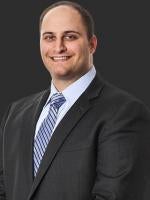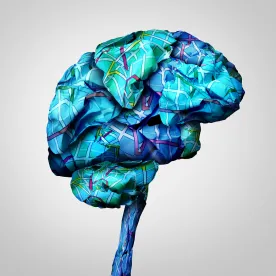On July 3, 2019, the Federal Circuit issued eight, separate opinions denying Athena Diagnostic Inc.’s (Athena) petition for en banc rehearing on the question of eligibility of medical diagnostic patents. Athena Diagnostics, Inc. v. Mayo Collaborative Servs., LLC, No. 2017-2508. Judge Hughes stated these opinions are illustrative of “how fraught the issue of § 101 eligibility, especially as applied to medical diagnostics patents, is.” Indeed, even though all twelve judges agreed that the patent-at-issue should be patent eligible, the Federal Circuit’s decision leaves intact a ruling that the patent does not claim patentable subject matter. These decisions also uniformly request intervention from the Supreme Court or Congress to address the uncertainty over whether patents covering medical diagnostic methods are patent eligible after the Supreme Court’s decision in Mayo Collaborative Services v. Prometheus Laboratories, Inc., 566 US. 66 (2012).
Concurring Opinions
The lead opinion, written by Judge Lourie and joined by Judges Reyna and Chen, appears to reluctantly deny rehearing based on the Mayo decision and subsequent Federal Circuit decisions applying Mayo. According to Judge Lourie, these prior decisions have created a “clear line” distinction between patent-eligible “method of treatment claims and unconventional laboratory techniques” and patent-ineligible “diagnostic methods that consist of routine steps to observe the operation of a natural law.” “As long as [this] precedent stands, the only possible solution lies in the pens of claim drafters or legislators.” Accordingly, rehearing was denied.
An opinion written by Judge Hughes and joined by Chief Judge Prost and Judge Taranto, agreed that “the language in Mayo . . . forecloses this court from adopting an approach or reaching a result different from the panel majority’s [denial of rehearing].” Judge Hughes also requested “further explication of eligibility standards in the area of diagnostics patents” that provided a “reasonable and measured way to differentiate between overly broad patents claiming natural laws and truly worthy specific applications.”
Judge Dyk, joined in part by Judges Hughes and Chen, also concurred in denying a rehearing. While Judge Dyk agreed that the framework to determine patent eligibility provided in Mayo is “sound overall,” he does not believe that it provides a workable result as applied to specific diagnostic patents. According to Judge Dyk, “Mayo left no room for [lower courts] to find typical diagnostic claims patent eligible, absent some inventive concept at Mayo step two.” Judge Dyk also identified a tension between Mayo and the Supreme Court’s later decision in Association for Molecular Pathology v. Myriad Genetics, Inc., 569 U.S. 576 (2013). Myriad, according to Judge Dyk, “recognized that an inventive concept can sometimes come from the discovery of an unknown natural phenomenon and its application for a diagnostic purpose,” and make specific claims to such a discovery patent-eligible. But under Mayo, “a natural phenomenon itself, no matter how narrow and specific, cannot supply the requisite ‘inventive concept’ to make a claim patent eligible.” Accordingly, Judge Dyk requested that the Supreme Court “refine the Mayo framework to allow for sufficiently specific diagnostic claims with proven utility.” In his view, the Mayo framework should change slightly at both steps. At Step 1, claims that broadly encompass a natural law are ineligible and do not require any further analysis. At Step 2, Judge Dyk would require a “discovery” and that the claims recite a specific application of that “discovery” with established utility. According to Judge Dyk, this specific application requirement would mitigate “against the risk of granting patents too early . . . and thereby prevents monopolization of the ‘basic tools of scientific and technological work.’” Judge Dyk believes this case would be a good vehicle for the Supreme Court to refine the Mayo framework as he suggests because the claims at issue are specific enough and have proven utility to be patent eligible.
Judge Chen also concurred with the panel’s decision to deny rehearing based on the Supreme Court’s Mayo decision. In his concurrence, Judge Chen focused on the evolution of patent eligibility law at the Supreme Court over the years. According to Judge Chen, the Court’s Mayo decision was a significant departure from its prior decision in Diamond v. Diehr, 450 U.S. 175 (1981), and introduced a point of novelty/inventive concept approach to patent eligibility rejected in Diehr. This approach, according to Judge Chen, is “considerably harder to apply consistently than the Diehr framework, and more aggressive in its reach.” Due to these competing opinions, Judge Chen requested clarification from the Supreme Court as to what remains good law after the Mayo decision. Nevertheless, Judge Chen agreed that under the most recent Supreme Court precedent, the claims at issue were not patent eligible.
Dissenting Opinions
The lead dissenting opinion, written by Judge Moore and joined by Judges O’Malley, Wallach, and Stoll, disagrees with the majority’s reasoning that Mayo compels a finding of patent ineligibility. Observing that the Federal Circuit has found every medical diagnostic claim ineligible since Mayo, Judge Moore believes that the court has incorrectly extended Mayo, and created a per se rule foreclosing the patenting of diagnostic inventions, which, in turn, has chilled research and development into potentially life-saving technology. In her view, the majority’s decision fails to take into account the differences between the scope of the claims in Mayo and the scope claims at issue in this matter – which was the primary focus of Mayo. According to Judge Moore, “claims [like those at issue] to specific, narrow processes, even if those processes involve natural laws, are not directed to the natural laws themselves,” and are therefore patent eligible. Judge Moore also believes that inventiveness of the claimed discovery should also be considered when assessing eligibility. New and useful discoveries, such as the previously unknown relationship between certain antibodies and a rare disease at issue in this case, should be patent eligible under § 101.
An opinion written by Judge Newman and joined by Judge Wallach, also disagreed with the majority’s holding. According to Judge Newman, the majority has “mistakenly enlarged” Mayo in creating a per se rule against the patenting of medical diagnostic methods. Judge Newman also disagreed with the majority’s belief that Mayo created a distinction between patent eligible therapeutic methods and patent ineligible diagnostic methods. In her view, the diagnostic claims at issue were not a law of nature; they were a novel, multi-step method performed by a combination of specific chemical and biological steps that the Court in Mayo did not exclude from eligibility for patenting.
Judge Stoll also submitted a dissenting opinion, joined by Judge Wallach. In her opinion, Judge Stoll disagreed with the majority’s bright-line rule because it was based on an over-reaching and flawed test for eligibility that undermines the constitutional rationale for having a patent system. According to Judge Stoll, en banc review would help the court develop an articulable standard for its § 101 jurisprudence moving forward.
Judge O’Malley submitted the final dissenting opinion. In her opinion, Judge O’Malley echoed the sentiments of the other dissenters – that the majority’s decision applied Mayo too broadly. Judge O’Malley also took issue with the inventive concept requirement set forth in Mayo. According to Judge O’Malley, Congress rejected this “baffling” and “unworkable” requirement when it amended the Patent Act in 1952, but the Supreme Court read this requirement back into the eligibility inquiry through the Mayo decision. Because the disagreements in the opinion in this matter center on the interpretation of the “inventive concept,” Judge O’Malley encouraged Congress to clarify the appropriate requirements for § 101 eligibility.
Conclusion
This decision, with its multiple opinions, highlights the uncertainty in § 101 jurisprudence and the difficulty courts have had grappling with recent Supreme Court decisions on this issue. Many of these opinions also reference the recent Senate hearings concerning § 101, and could be an indicator of upcoming legislative or Supreme Court action in this area.





 />i
/>i

